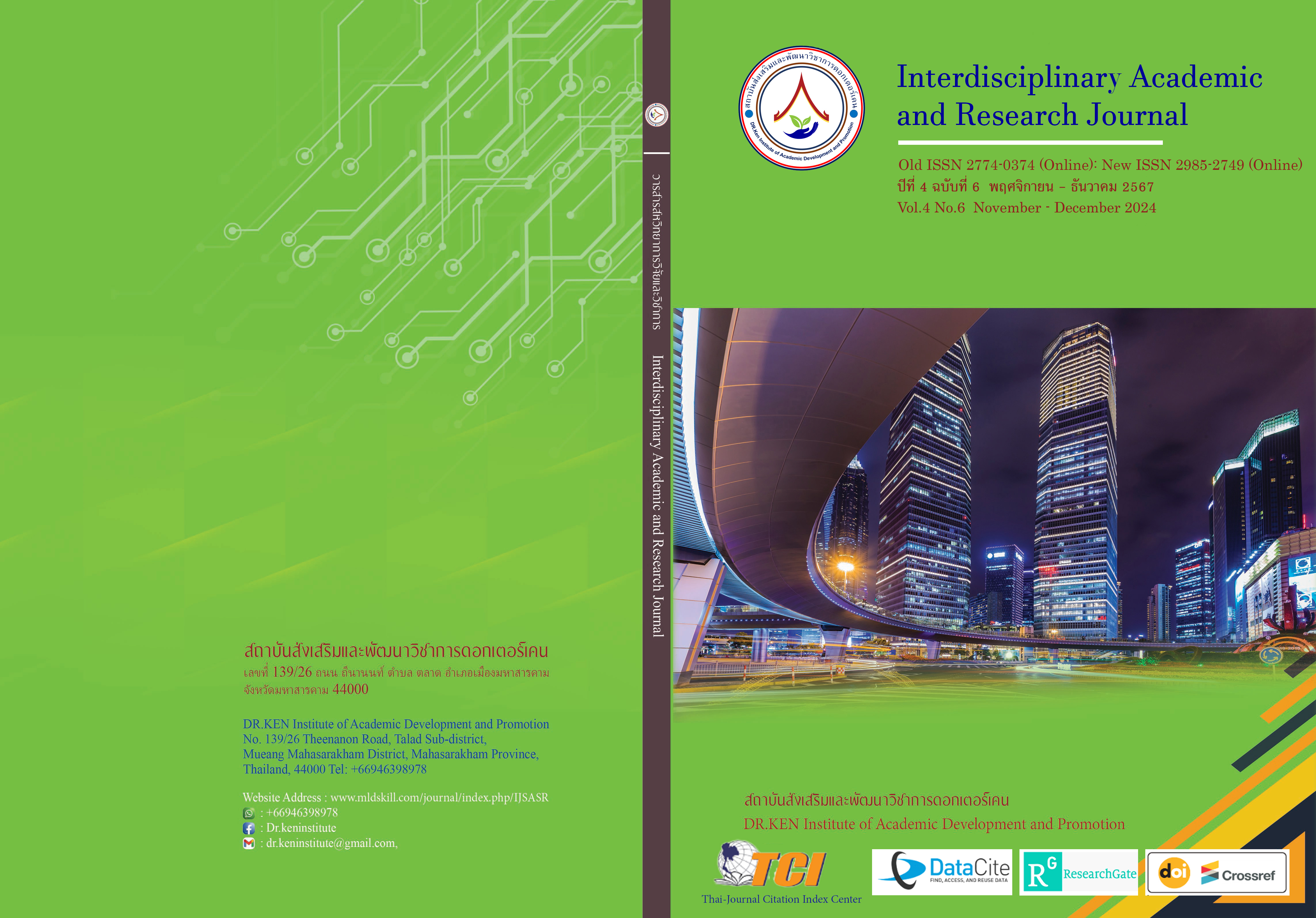The Effects of Weaving Activities on the Pattern and Relationship Understanding of Young Children
DOI:
https://doi.org/10.60027/iarj.2024.278724Keywords:
Weaving Activities, Pattern and Relationship, Young ChildrenAbstract
Background and Aims: Patterns and relations are kindergarten mathematics about numbers and algebra that would help improve their logical thinking skills. The purpose of this study was to study the effects of weaving activities on the pattern and relationship understanding of young children.
Methodology: The subjects of this study selected by cluster sampling consisted of 25 male and female young children, aged 4 - 5 years old, studying in kindergarten year 1/1, semester 2, academic year 2023, Watladplakao school, Lad Phrao district, Bangkok. The tools used in the study were 1) 24 weaving activity plans and 2) The practical assessment form of pattern and relationship understanding of young children 12 scores. Quantitative analysis was done by using the mean and standard deviation, while qualitative analysis was done by content analysis and descriptive narration.
Results: They had improvements in pattern and relationship understanding in all 4 aspects, including identifying the patterns, reproducing, extending, patterns, and relationship creating. They developed their ability to recognize patterns and relationships, repeat the patterns, extend patterns correctly, and were able to create and explain their patterns to others.
Conclusion: The results showed that young children who participated in weaving activities had higher posttest average scores than the pretest scores both overall and in each aspect.
References
กระทรวงศึกษาธิการ. (2560). หลักสูตรการศึกษาปฐมวัย พุทธศักราช 2560. ชุมนุมสหกรณ์การเกษตรแห่งประเทศไทย จำกัด.
นภเนตร ธรรมบวร. (2549). การพัฒนากระบวนการคิดในเด็กปฐมวัย. พิมพ์ครั้งที่ 5. สำนักพิมพ์แห่งจุฬาลงกรณ์มหาวิทยาลัย.
นิกร นุชเจริญผล. (2525). ลายสาน. วิทยาลัยเทคนิค.
วรัษสฎาพร อินทรธวิช, ชลาธิป สมาหิโต, และ อรพรรณ บุตรกตัญญู. (2566). ผลการจัดประสบการณ์ดนตรีตามแนวคิดของคาร์ล ออร์ฟ ที่มีต่อความเข้าใจแบบรูปและความสัมพันธ์ของเด็กปฐมวัย. Journal of Inclusive and Innovative Education, 7(2), 90-103.
วิชญะ น้อยมาลา. (2564). ทักษะจำเป็นของการทำงานในศตวรรษที่ 21 The Essential Work Skills of The 21st Century. วารสารวิชาการรัตนบุศย์, 3(1), 45-57.
วิบูลย์ ลี้สุวรรณ. (2532). เครื่องจักสานในประเทศไทย. โอ.เอส. พริ้นติ้ง เฮ้าส์.
วิบูลย์ ลี้สุวรรณ. (2541). ชุดมรดกศิลปหัตถกรรมไทย เครื่องจักสาน. องค์การค้าของคุรุสภา.
สถาบันส่งเสริมการสอนวิทยาศาสตร์และเทคโนโลยี (สสวท.) กระทรวงศึกษาธิการ. (2563). กรอบการเรียนรู้ และแนวทางการจัดประสบการณ์การเรียนรู้บูรณาการวิทยาศาสตร์ เทคโนโลยี และคณิตศาสตร์ในระดับปฐมวัยตามหลักสูตรการศึกษาปฐมวัย พุทธศักราช 2560. โกโกพริ้นท์ (ไทยแลนด์).
สนไชย ฤทธิโชติ. (2539). เครื่องไม้ไผ่-หวาย. โอ.เอส. พริ้นติ้ง เฮ้าส์.
Irmawati, I., & Ichsan, I. (2021). The Effect of Weaving Activities With Banana Leaves on Fine Motor Ability Early in Childhood. Jurnal Pendidikan Anak Usia Dini. 12(2), 125-135.
Kamaruddin, I., Azis, A., Assabana, S., Ismunandar, A., & Meilina, D. (2022). Improving Early Childhood Fine Motor Development Through Weaving Activities. Journal of Childhood Development. 2(1), 71-79.
Ministry of Education of Singapore. (2013). Nurturing Early Learners A Curriculum for Kindergartens in Singapore Numeracy. Ministry of Education of Singapore.
Ministry of Education of Singapore. (2023). Nurturing Early Learners A Curriculum for Preschool Education in Singapore. Ministry of Education of Singapore.
Sanghvi, P. (2020). Piaget’s theory of cognitive development: a review. Indian Journal of Mental Health 2020. 7(2), 90-96.
The Government of Manitoba. (2013). Kindergarten to Grade 8 mathematics: Manitoba curriculum framework of outcomes. Manitoba Education, Canada.
Van Der Veer, R. (2020). Vygotsky’s theory. In S. Hupp & J.D., Jewell (Eds.), The Encyclopedia of Child and Adolescent Development (PP.1-7). John Wiley & Sons Vygotsky’s sociocultural and bandura social learning theories essay.
Downloads
Published
How to Cite
Issue
Section
License
Copyright (c) 2024 Interdisciplinary Academic and Research Journal

This work is licensed under a Creative Commons Attribution-NonCommercial-NoDerivatives 4.0 International License.
Copyright on any article in the Interdisciplinary Academic and Research Journal is retained by the author(s) under the under the Creative Commons Attribution-NonCommercial-NoDerivatives 4.0 International License. Permission to use text, content, images, etc. of publication. Any user to read, download, copy, distribute, print, search, or link to the full texts of articles, crawl them for indexing, pass them as data to software, or use them for any other lawful purpose. But do not use it for commercial use or with the intent to benefit any business.
















.png)


